At 3811 m above sea level, Lake Titicaca—a lake that sits in the Altiplano basin between Bolivia and Peru—is known as the highest navigable lake in the world. Its location mid-way between the Bolivian city of La Paz and Peru’s Cusco make it a popular stop-off along the Gringo trail of South America. Many of the tourists that flock to the small Peruvian city of Puno do so in order to visit the islands of Uros, artificial islands made from floating reeds.
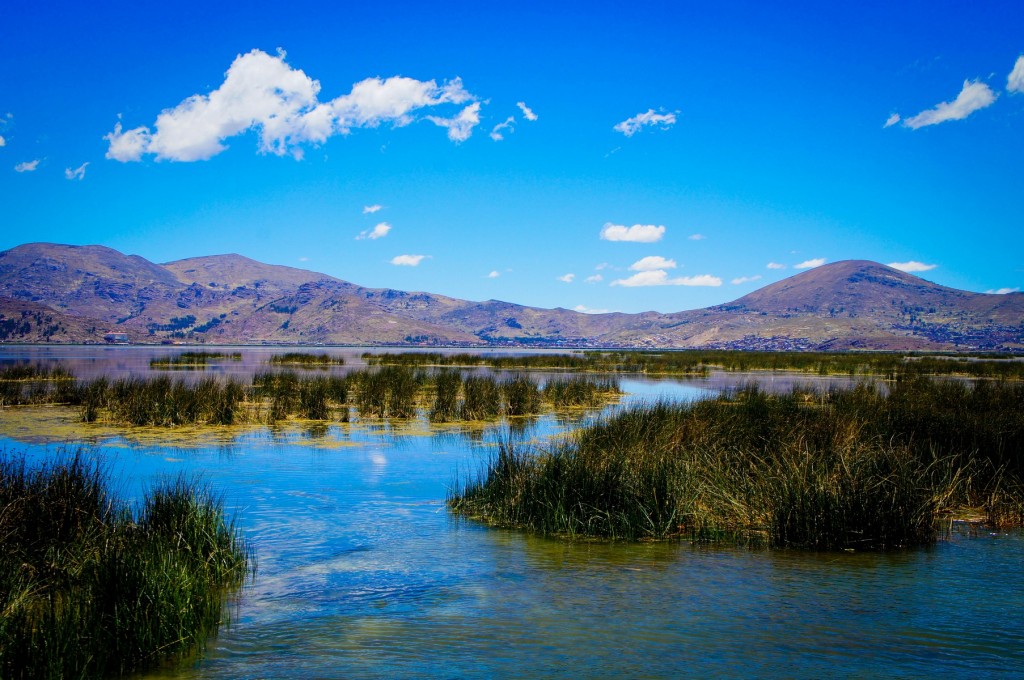
Once in Puno there is no shortage of tour operators hustling to escort throngs of tourists across the lake to visit the islands: tours vary from half-day, full-day, to overnight trips. We chose to take the half day tour: a short boat trip across the lake to the closest islands where we would listen to a presentation about the islands, meet the islanders and take a boat ride in a traditional boat made entirely from reeds.
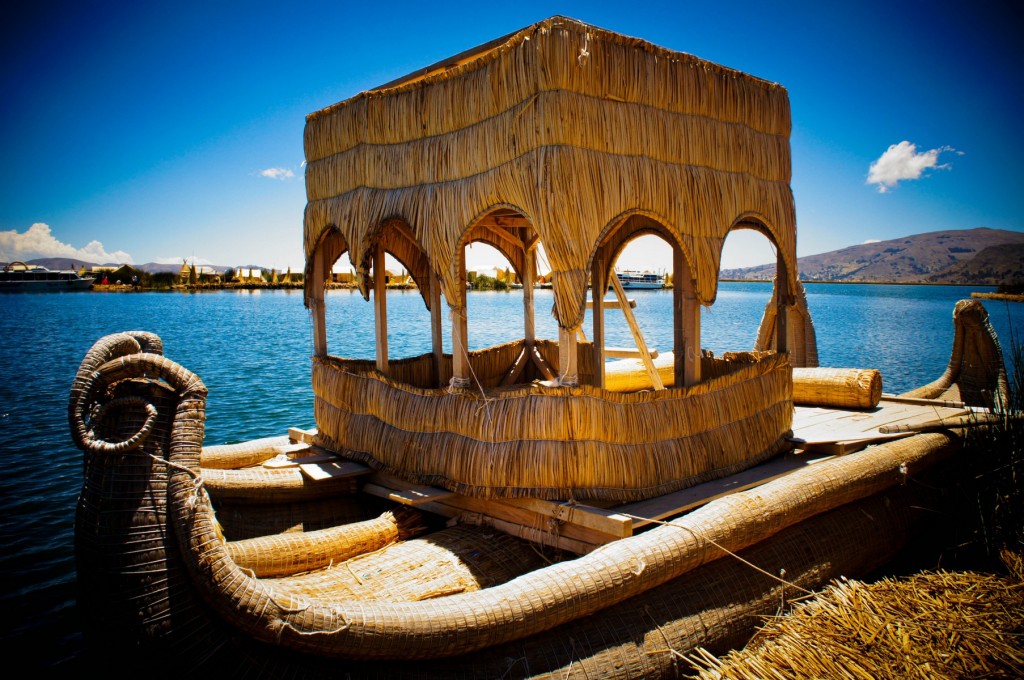
The tour began from the harbour in Puno, a familiar scene of lost-looking tourists facing unending hassle from touts and hawkers. We got on the boat and headed toward the island while the tour guide introduced himself and explained to us the history of the area, alongside a string of tired-sounding jokes. The lake is undoubtedly pretty, if a little polluted by plastic bottles in the harbour area.
Comprising of around 44 islands fashioned from reeds, the Uros float on the surface of the lake, each moored by 8 anchored ropes. As we approached the islands we were faced with the depressingly touristy sight of indigenous women, clad in brightly coloured clothing, waving and calling to the tourists on board. Stepping off the boat onto the springy, flattened reed surface is a unique experience and the craftsmanship of the reed huts is exquisite—it is hard to imagine that each of these tiny islands is home to a number of families.
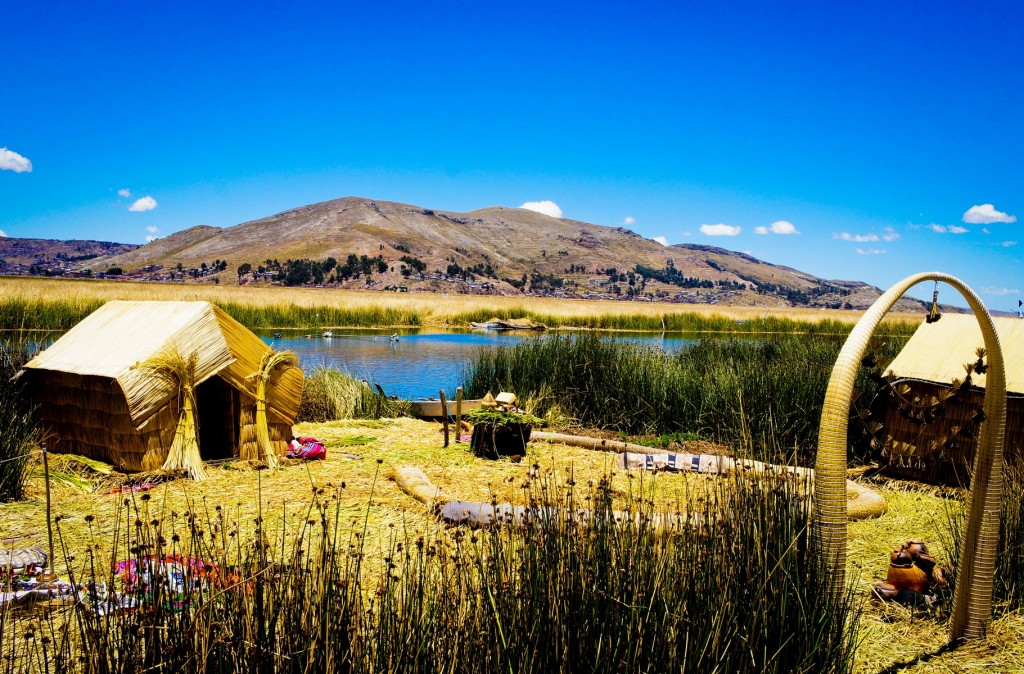
With the help of a few islanders our guide explained the history of the area, which included a demonstration of how the islands are formed and tethered. The totura reeds sit on a root –base, approximately a meter thick, that floats about in the water like a cork. By attaching ropes, weighted with heavy stones, and fastening these to other islands, the islanders can moor each island in a somewhat stable location. The reeds are then flattened to form the surface of the island and everything built on the island is woven from the reed. The original inhabitants of the Uros formed the islands as a defensive measure—the islands can be moved when under threat—and for many centuries they have existed in an idyllically self-sufficient manner. Sadly, these islands themselves are now under threat as the younger generation no longer wish to live in such isolated conditions and many leave for the mainland to go to university, never returning.
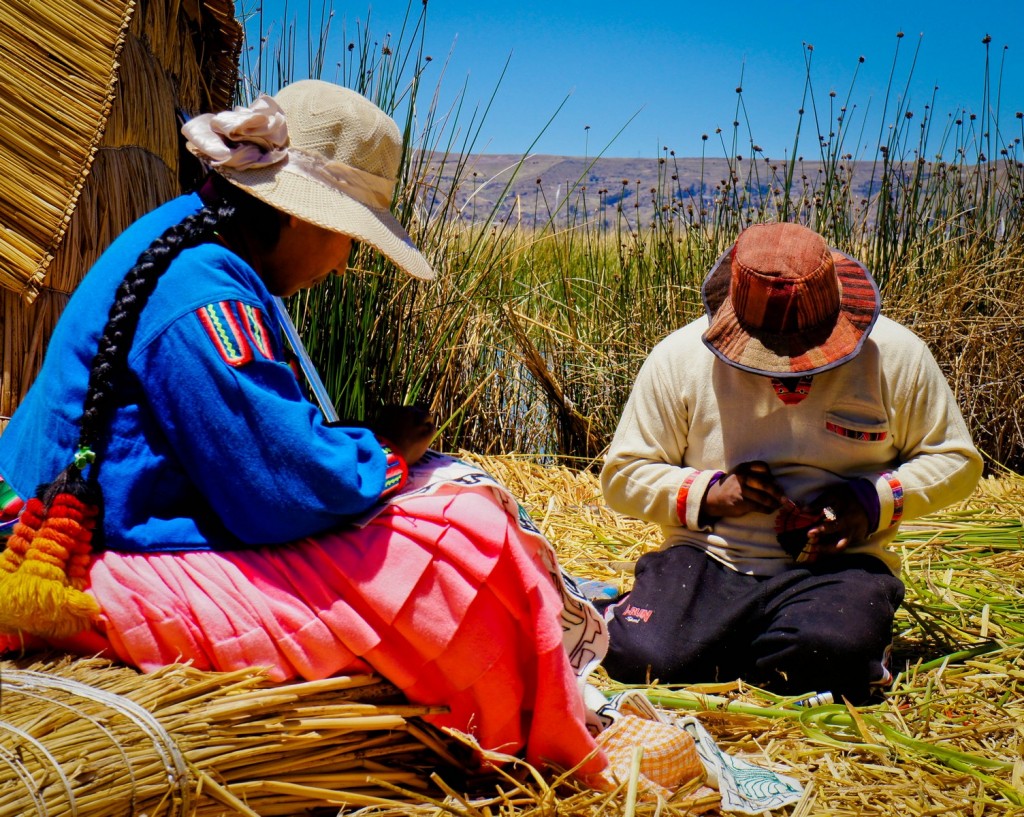
Once the demonstration is over, tourists are hit with the hard-sell. To maintain their livelihood, the islanders make colourful handicrafts and artefacts. It is true that many of the textiles on offer are beautiful but it’s hard to explain something as remote as a bursting backpack and airline weight restrictions to the islanders.
The islanders seem genuinely happy to accommodate the Gringos with their sunburns, woven clothing and cameras—making the effort to engage in friendly conversation and always keen to address everybody by name. Of course this makes things more difficult when they ask you by name why you don’t want to buy their handicrafts! For an extra 10 soles we were offered the chance to ride in a traditional reed-boat. Whilst this was an obvious ploy to extract more money from us, we went ahead anyway and we were pleased we did as we got a better perspective of the island by sailing completely around it.
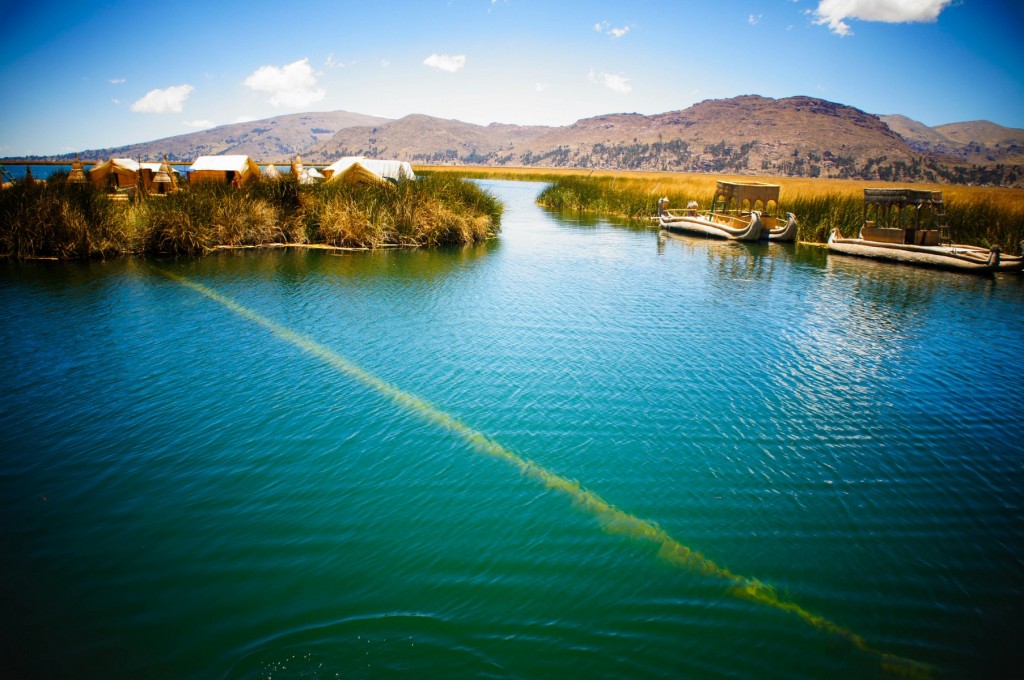
The boats are made entirely from reeds but we were told that in recent years the islanders have been using plastic water and coke bottles to help the boats stay afloat and to keep them in action for longer. What a great way to recycle! Rowing the boats is a cumbersome and arduous procedure that the islanders make look effortless: it was only when the gringos were allowed a turn that we crashed into the side of the island.
All in all the tour was pretty interesting; if you can ignore the prevailing feeling of being stuck in a tourist trap, but half a day was enough. As far as I am aware, the full day tour takes you to more of the same and the selling tactics are more aggressive the further into the lake you go. For me, it was fascinating to see how the islands were formed and how the islanders live but I was happy to be back on the mainland for lunch and an afternoon off tourist duties!
Do you sometimes get a bit tired of being a ‘tourist’? Have you ever felt let down by a place because of the aggressive sales tactics used to make you buy things you don’t really want? Or are you happy to buy souvenirs from the places you visit? Tell me about it here!

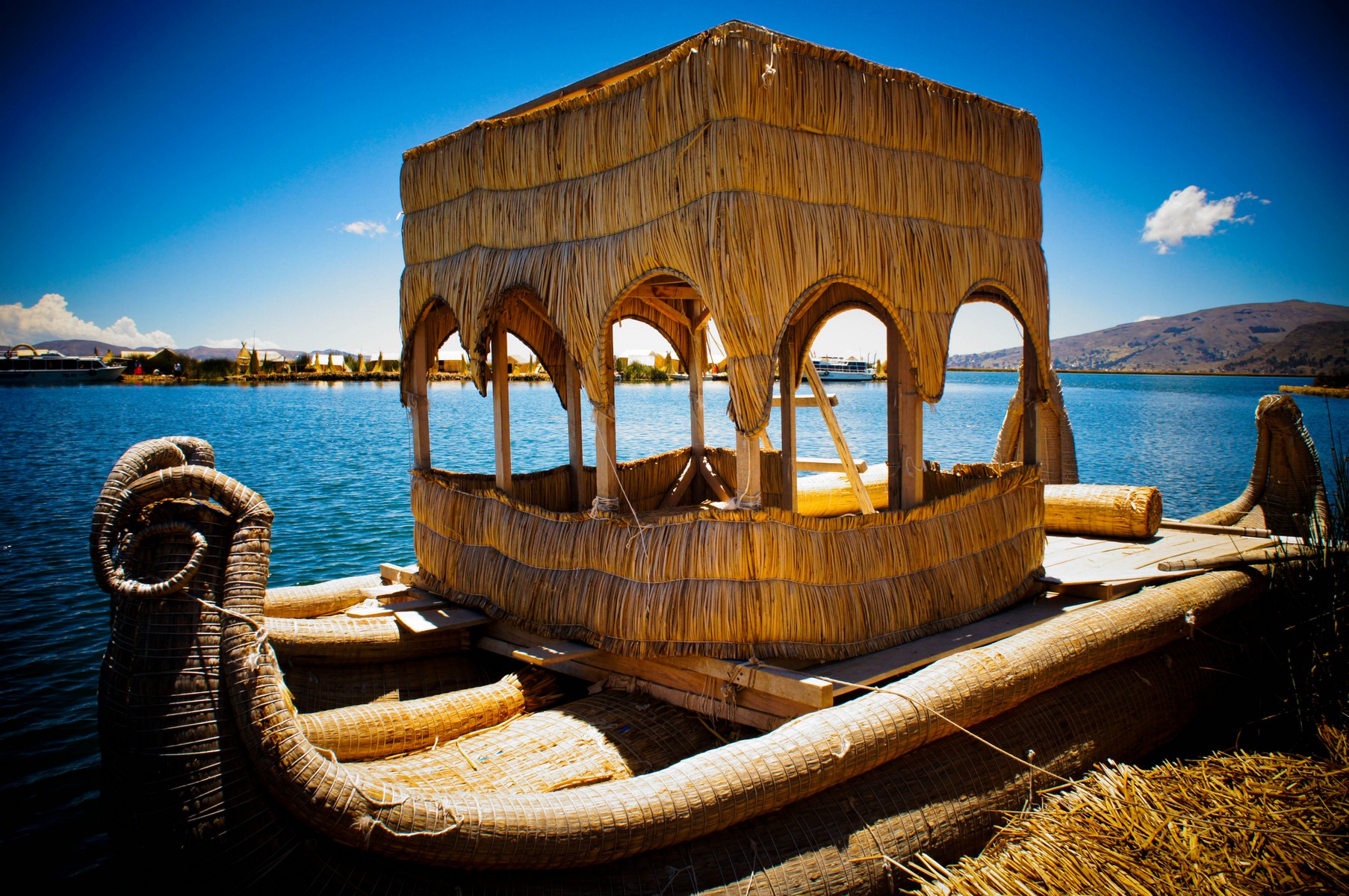
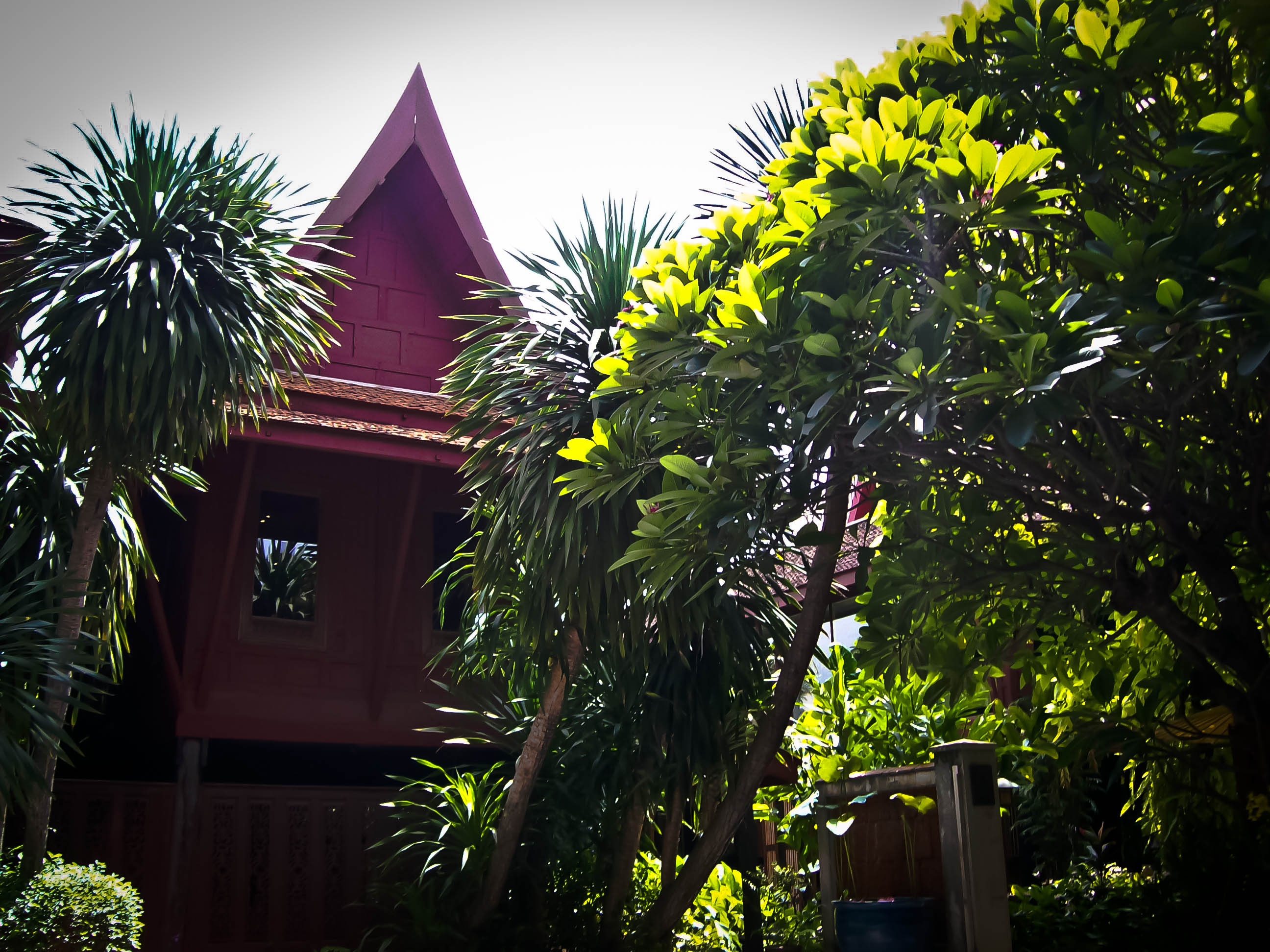
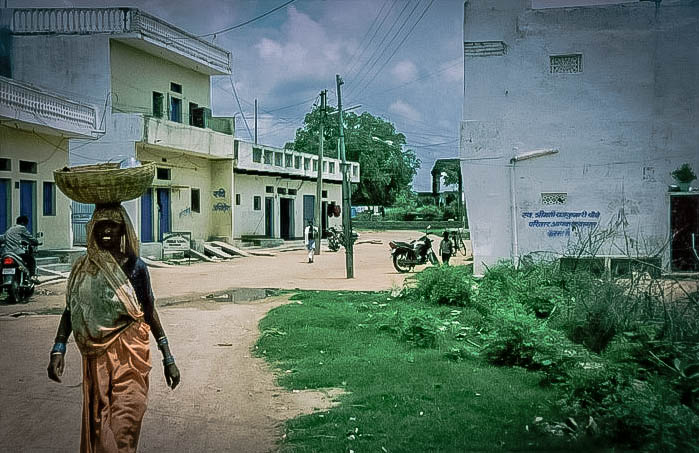
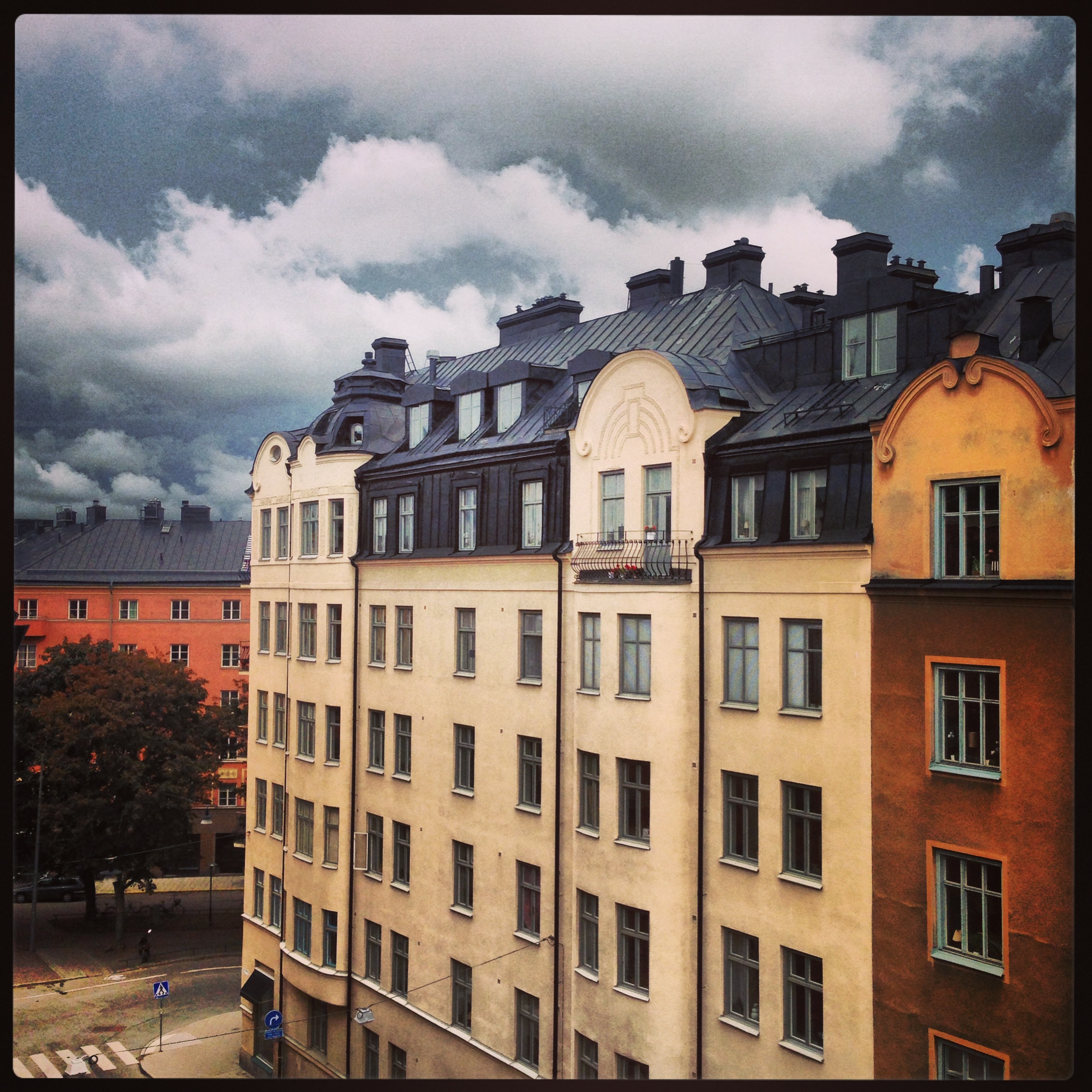
I think it is very different if there is a shop that you can ‘at will’ decide to go into or not, but as soon as the hard sales begin I just want to get out of there! Did you end up buying anything?
Yes, I bought a wall hanging. I thought it would look nice on the wall in Tenerife. I overpaid for it and as soon as I’d bought it all the others started saying “why you not buy from me?!!” Doh 🙁
Haaa. Well you maybe overpaid for it, but at least you can say you have something originally from the floating islands. Who know it might look amazing when u get it ont he wall. That is horrible that the others were questioning you though. I think it would definately have spoiled my trip somewhat.
wow! these floating islands are so nice! that would be such great theme and backdrop for a movie…
They are incredibly picturesque, maybe I should write a screenplay?!
If you really want to experience the island you must explore more. I spent the night at two different families little hotels on the reeds. They were so nice helpful accommodating. Everything was made out of reeds. Everything was decorated so cute and cozy in the little huts he had. Amazing!! It was so cold in the little hut. The father brought three big size coke bottle filled with really hot water. It kept me warm all night. Dinner was good and so was breakfast I took a tour with him. He showed me so many interesting places. One was the island community of Juliaca. It is a closed kind of socialist community. The people share everything. It is so idyllic. The fields were beautiful flowers everywhere. All the islanders were so nice. You got to take quite a beautiful trail up to their community center. They explained about their social traditions. The island is closed except for a girl who marries from a different island which is only now allowed because of the lack of men on the island. The couples must live together before marriage. Divorce is not allowed. The weirdest thing is that the most important thing a man must know is how to knit and knit well. If he knits well he attracts the most desirable wife. The men were sitting around knitting all over. The women and men worked side by side in the folds.
The next day I visited an Island with Inca ruins everywhere. The Incas put mummies in the caves and crevices in the mountains. So interesting. Lake Titicaca is not really about going to just Puno. Although I was lucky enough to see the huge market and song festival that was going on. So many people come in from all over to sell their wares and beautiful crafts also all their produce. The ladies wear their most beautiful outfits and hats. The men are also dressed very in their best. Children are so cute and everyone has babies in their backs wrapped tightly in their colorful blankets.
Go to this beautiful area but stay for longer than a half day tour. Maybe that is why the man above only called this a tourist trap. How sad he saw nothing really if this is all he got out of this lovely place.